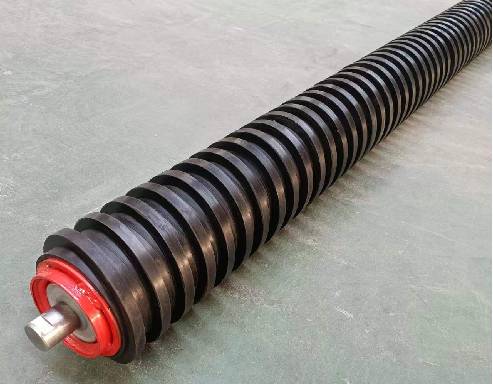 Afrikaans
Afrikaans  Albanian
Albanian  Amharic
Amharic  Arabic
Arabic  Armenian
Armenian  Azerbaijani
Azerbaijani  Basque
Basque  Belarusian
Belarusian  Bengali
Bengali  Bosnian
Bosnian  Bulgarian
Bulgarian  Catalan
Catalan  Cebuano
Cebuano  Corsican
Corsican  Croatian
Croatian  Czech
Czech  Danish
Danish  Dutch
Dutch  English
English  Esperanto
Esperanto  Estonian
Estonian  Finnish
Finnish  French
French  Frisian
Frisian  Galician
Galician  Georgian
Georgian  German
German  Greek
Greek  Gujarati
Gujarati  Haitian Creole
Haitian Creole  hausa
hausa  hawaiian
hawaiian  Hebrew
Hebrew  Hindi
Hindi  Miao
Miao  Hungarian
Hungarian  Icelandic
Icelandic  igbo
igbo  Indonesian
Indonesian  irish
irish  Italian
Italian  Japanese
Japanese  Javanese
Javanese  Kannada
Kannada  kazakh
kazakh  Khmer
Khmer  Rwandese
Rwandese  Korean
Korean  Kurdish
Kurdish  Kyrgyz
Kyrgyz  Lao
Lao  Latin
Latin  Latvian
Latvian  Lithuanian
Lithuanian  Luxembourgish
Luxembourgish  Macedonian
Macedonian  Malgashi
Malgashi  Malay
Malay  Malayalam
Malayalam  Maltese
Maltese  Maori
Maori  Marathi
Marathi  Mongolian
Mongolian  Myanmar
Myanmar  Nepali
Nepali  Norwegian
Norwegian  Norwegian
Norwegian  Occitan
Occitan  Pashto
Pashto  Persian
Persian  Polish
Polish  Portuguese
Portuguese  Punjabi
Punjabi  Romanian
Romanian  Russian
Russian  Samoan
Samoan  Scottish Gaelic
Scottish Gaelic  Serbian
Serbian  Sesotho
Sesotho  Shona
Shona  Sindhi
Sindhi  Sinhala
Sinhala  Slovak
Slovak  Slovenian
Slovenian  Somali
Somali  Spanish
Spanish  Sundanese
Sundanese  Swahili
Swahili  Swedish
Swedish  Tagalog
Tagalog  Tajik
Tajik  Tamil
Tamil  Tatar
Tatar  Telugu
Telugu  Thai
Thai  Turkish
Turkish  Turkmen
Turkmen  Ukrainian
Ukrainian  Urdu
Urdu  Uighur
Uighur  Uzbek
Uzbek  Vietnamese
Vietnamese  Welsh
Welsh  Bantu
Bantu  Yiddish
Yiddish  Yoruba
Yoruba  Zulu
Zulu Understanding the Mechanisms of Conveyor Systems and Pulley Operations
The Importance of Conveyor Belts and Pulleys in Modern Industry
In today's fast-paced industrial environment, efficiency is key to maintaining competitive advantage. Among the various technologies that contribute to operational efficiency, conveyor belts and pulleys stand out as fundamental components in manufacturing and logistics. These systems, which facilitate the movement of materials and products, are essential in various sectors, including mining, agriculture, manufacturing, and warehousing.
Understanding Conveyor Belts
A conveyor belt is a continuous loop of material that moves goods from one point to another. The belt can be made from a variety of materials, including rubber, fabric, and metal, depending on the intended use and the types of products being handled. The flexibility in materials allows for specialization; for instance, belts designed for heavy-duty applications in mining typically exhibit high durability and resistance to wear and tear, while those used in food processing must meet stringent sanitary standards.
Conveyor belts have revolutionized the way goods are transported in factories and warehouses. They streamline processes, significantly reducing manual labor and transportation time. When combined with automation, conveyer belts allow for the seamless movement of items through different stages of production, from assembly to packaging.
The Role of Pulleys
Pulleys are integral components involved in the operation of conveyor belts. A pulley is a wheel on an axle or shaft that is designed to support movement and change the direction of force. In the context of a conveyor system, pulleys are used to guide the conveyor belt along its track, creating tension and facilitating movement. There are two main types of pulleys used in this system drive pulleys, which provide the necessary power to move the belt, and return pulleys, which help maintain the belt's position.
conveyor belt and pulley

Pulleys come in various shapes and sizes, with the selection often based on the specific requirements of the system. For example, larger pulleys are typically used in heavy-duty applications, while smaller pulleys may be adequate for lighter loads. The relationship between the diameter of the pulley and the tension in the belt is critical; proper tension ensures optimal performance, reduces wear, and prolongs the lifespan of both the belt and the system as a whole.
Benefits of Conveyor Belts and Pulleys
The integration of conveyor belts and pulleys results in numerous benefits for businesses. Firstly, they enhance efficiency by minimizing the time and labor required for product handling. In traditional systems where manual transportation is necessary, bottlenecks can occur, leading to delays and increased operational costs. Conveyor systems efficiently transport materials, ensuring a smoother workflow.
Secondly, they improve safety in the workplace. By mechanizing the transport of heavy or hazardous materials, conveyor belts reduce the risk of workplace injuries associated with manual handling. Additionally, they can be designed with safety features such as emergency stops and guards that protect workers from accidental contact.
Moreover, conveyor systems are highly adaptable. With the ability to be customized in terms of size, shape, and configuration, they can fit various spaces and operational needs. This adaptability allows businesses to scale their operations according to demand, making it easier to respond to market changes.
Conclusion
In conclusion, conveyor belts and pulleys are indispensable in modern industry. Their ability to enhance productivity, improve safety, and offer adaptability makes them vital for a wide range of applications. As industries continue to advance and embrace automation, the role of these components will only become more significant, driving efficiency and innovation in various sectors. Embracing the use of conveyor belts and pulleys is not merely a choice; it is a necessity for businesses aiming for sustainable growth in a competitive marketplace.
-
Revolutionizing Conveyor Reliability with Advanced Rubber Lagging PulleysNewsJul.22,2025
-
Powering Precision and Durability with Expert Manufacturers of Conveyor ComponentsNewsJul.22,2025
-
Optimizing Conveyor Systems with Advanced Conveyor AccessoriesNewsJul.22,2025
-
Maximize Conveyor Efficiency with Quality Conveyor Idler PulleysNewsJul.22,2025
-
Future-Proof Your Conveyor System with High-Performance Polyurethane RollerNewsJul.22,2025
-
Driving Efficiency Forward with Quality Idlers and RollersNewsJul.22,2025





























